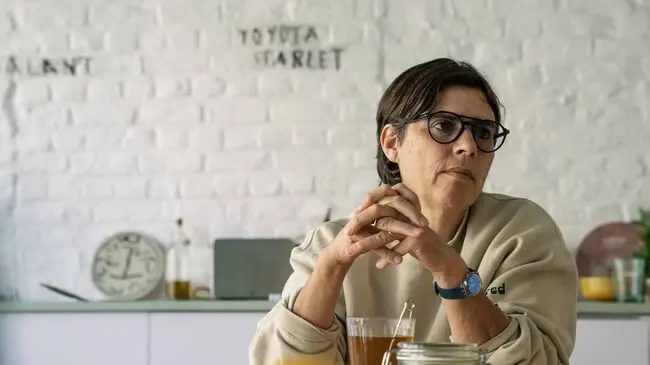It's our task to help people understand the history of exhibitions

Sound has always been an integral part of not only the arts but also of many revolutions. According to Lotte Beckwé, curator of A NON-U-MENTAL HISTORY OF M HKA – Part 2: What must be heard, the exhibition not only highlights the nuances of sound’s role in the arts but also touches upon the idea of forgotten history in the form of obliterated sounds. In an anecdote, Lotte explains that the Belgian revolution of 1830 started when people attending the opera La muette de Portici went on the streets. As such, the revolution can be perceived as a sound piece that blurred the lines between the revolutionaries’ objectives and the aesthetically great, which was embodied by the opera. In her artistic practice, Stockholm and Brussel-based artist Merzedes Sturm-Lie’s searches for and creates sounds and voices that hold the power to connect the revolutionary and the aesthetically great. We gathered with Lotte, Merzedes at the Museum of Modern Art, M HKA, Antwerp, to discuss Lotte and Merzedes’ shared love for sound, history, and the archive.
Lotte and Merzedes, how did you meet?
L: I moved to Brussels when I was 18 and saw Merzedes for the first time in a bar called De Dolle Mol. She was sitting at the bar with her father. That’s the first memory I have of her.
M: At the time, De Dolle Mol was an anarchist bar. I started working there when I was 16. Sometimes, I would organise concerts, film screenings and exhibitions on the second floor, above the bar. You really start to talk with each other in these kinds of places.
L: It’s always nice to meet people who have the energy to do stuff, to make stuff, to say stuff, to not restrict themselves to a 9 to 5 job and to make something more out of the existential question of what on Earth we are doing here.
When I contacted Lotte, she suggested inviting Merzedes to participate in this interview because of the strong connection between the exhibition and Merzedes’ artistic practice. Could you elaborate on this connection?
L: The exhibition has an outspoken historiographic aspect. Merzedes and I are both interested in not forgetting history. We both have the tendency to revert to history and to ask what is still relevant from the archive. I believe that reverting to the archive can help us put the present into perspective. By doing so, one can resist the often pointless yet constant urge to find something ‘new’.
By singing with a megaphone, Merzedes asks questions such as where and when you’re allowed to sing
In Merzedes’ artistic practice, she strongly reverts to the idea of all that can be revolutionary in combination with something that is, aesthetically speaking, great, such as opera. For example, by singing with a megaphone, Merzedes asks questions such as who decides who gets to sing, where and when you’re allowed to sing, and where you’re not. She confronts archival sounds with the present. I think this methodology is productive because the archival sounds she uses would have otherwise gotten lost. I thought of inviting Merzedes to take part in this conversation because we both enjoy searching the archive and see the importance of going back to things that took place in the past, to look at them one more time with care.

Performance ‘Herz an Herz’ by Merzedes Sturm-Lie at Des Esseintes, Hoeilaart - Photo by Ludovic Beillard
Speaking of going back to the archive and the historiographic aspect of the exhibition, how was the process of selecting these pieces for the exhibition?
L: This exhibition is the second chapter of a series of five exhibitions focusing on fifty years of the avant-garde in Antwerp. That’s the bigger picture. Before M KHA, Antwerp was the home to the first cultural centre in Belgium which was called the International Cultural Centre, ICC. During the 70s and the beginning of the 80s, the ICC hosted various avant-garde artists.
From the beginning of the ICC’s activities in the 70s, sound pieces were prominently present in the cultural centre’s exhibitions
The first exhibition in this series focused on Gordon Matta-Clark and the foundation of the M KHA. The second exhibition was created out of my personal interest in sound mixed with the contemporary attention I noticed in sound art. On the one hand, I have personally always been interested in sound; for example, I always record conversations when I meet people for the first time. On the other hand, the overwhelming flow of visual stimuli is pushing audiences towards sound. The current attention for sound can also be seen in the number of podcasts that are being produced.
Moreover, from the beginning of the ICC’s activities in the 70s, sound pieces were prominently present in the cultural centre’s exhibitions. I noticed that in the archive of the ICC there were a lot of interesting sound pieces. Back then, these sound pieces were announced as performance concerts. I started looking at all the sound performances that took place at the ICC and finally I came up with this selection.


The pieces in the exhibition were of great impact because of the historical moment in which they were created. They made an anarchical statement and were political in the sense that they disturbed the artificial harmony of the institute. Nowadays, using a megaphone in an art space has a different effect. Against this light, I wonder what the political value of your work is in relation to the exhibition, Merzedes.
M: I don’t think that my practice merely aims to make a political statement. At the same time, I believe when looking at the history of the arts you see that you can always question things. Artists have always questioned societal values and taboos. I don’t think this is something that only happened in the 70s and the 80s. It also happened before and continues to happen today. There still are a lot of things to question, to shed light on and to reflect upon.
In my performances, I work with voice and sound trying to offer new interpretations of songs that foster socio-political hierarchies. It’s my aim to combine personal things, such as dreams, with bigger stories and possible futures. In my research on sound, I also focus on voice and play with the role of the female voice. Voice is often linked with activism: highlighting forgotten voices, stories and people that haven’t been heard. The focus and attention or lack of attention for voices from certain societal groups show the important role voice plays in society. I’m interested in how the idea of voice has manifested itself throughout human history, from mythical sirens to opera divas.


The majority of the works not only have a political side but also an outspoken social and temporal aspect because they took place in relation to an audience at a certain moment in time. In the exhibition, remnants of these moments are exhibited in the form of objects, photos, videos, and recorded audio. When walking through the exhibition, I wondered how the artists would feel about the way these pieces are shown. Does taking these pieces out of their original context and their performative form deprive them of their original meaning?
L: Most of the artists in the show are still alive so I contacted them at the beginning of the process of creating this exhibition. I always try to actively involve all the artists in the process. The participating artists, especially Jana Haimsohn and Christina Kubisch, were very happy about our decision to exhibit their works that were somewhere lost in the ICC’s video archive.
Going back to the original context, I was most surprised by my disproportionate institutional attention for and knowledge about male sound artists, such as Vito Acconci, Ben Vautier, Charlemagne Palestine and Jacques Charlier. I don’t want to deny how great these artists are, but, since in New York when sound art emerged it was perceived as a feminist movement, I wondered where the sound pieces made by women artists were.

Dear ICC, can I please come and play in Belgium? - Laurie Anderson
In the exhibition, we show three full-length performances by Jana Haimsohn, Connie Beckley and Christina Kubisch. I don’t perceive these pieces as something dead exhibited in closed cases. A piece is only dead when there is no archive. Besides, I believe it’s a museum’s task to help people understand the history of exhibitions that took place in the museum: why did the museum buy certain pieces and why did the museum create this exhibition? Pictures and explanations of works can be easily found on the internet, but the broader context in which an artwork was exhibited and personal correspondences between the museum and the artists can only be found in either personal or the museum’s archive. Therefore, the archive holds the power to give life to artworks. For example, in the exhibition, we have put a letter written by Laurie Anderson on display. She wrote, ‘Dear ICC, can I please come and play in Belgium?’ The letter is accompanied by a little note where she tells one of the technicians of the ICC to not worry about the broken lights: ‘I had a great time! Thank you!’. These archival documents give a much more personal view on not only the time in which the artwork was created and exhibited but also on the artist, and why they did what they did.
L: Is there a work in particular that relates to your practice, Merzedes?
M: I especially like the piece, Window to the World: Remember the Belgian Congo from 1978 by Vito Acconci. As a teenager, I saw Acconci’s work for the first time and it really showed me how artists can be instrumental in society by introducing new thinking patterns and questions. Although I am familiar with the work of Acconci, I didn’t know about this piece before so I was very happy to discover it.
Different Class works with the interest of their community at heart.
Our work’s purpose is to foster a solid network for independent artists, those who love them, and those who want to support them. Become a member to contribute to the local Belgian art scene.





